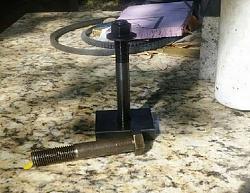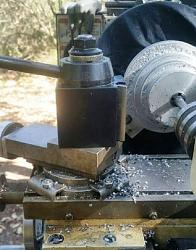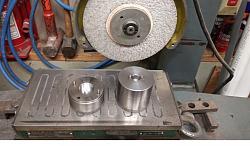Upgrading my lathe I bought a QCTP (quick change tool post) and it came with a base and mounting stud, however using the base will make your tools locate above center at the lowest position. The factory stud in the top of the compound is way too small and that allows the tool to wiggle under even a moderate cut. I first wanted to use the supplied stud and modify my compound for it but the threads on it were 9/16"x18 (not M15 commonly declared on the interwebs), an uncommon size that I didn't have a tap for.
The next larger common size was M16 but it wouldn't fit through the center of the tool post, but I bought some M16x100mm bolts any way and threaded the compound for that size since I already had a tap for that thread.
Then I mounted the bolt between the chuck and the live center and turned all but the bottom threads down to 9/16" and single point threaded the other end to fit the supplied flange nut. Since a 100mm length would be tight with the SAE thick washer I intended to use under the flange nut I trimmed off the corners of the hex head so that when I turned the shank down I got an additional 8-10mm of stud length.
Here's the new stud mounted into the compound using 262 Loctite (red).
Tada! Bob's your uncle and it's much more rigid cutting now.



 LinkBack URL
LinkBack URL About LinkBacks
About LinkBacks





 Reply With Quote
Reply With Quote





Bookmarks